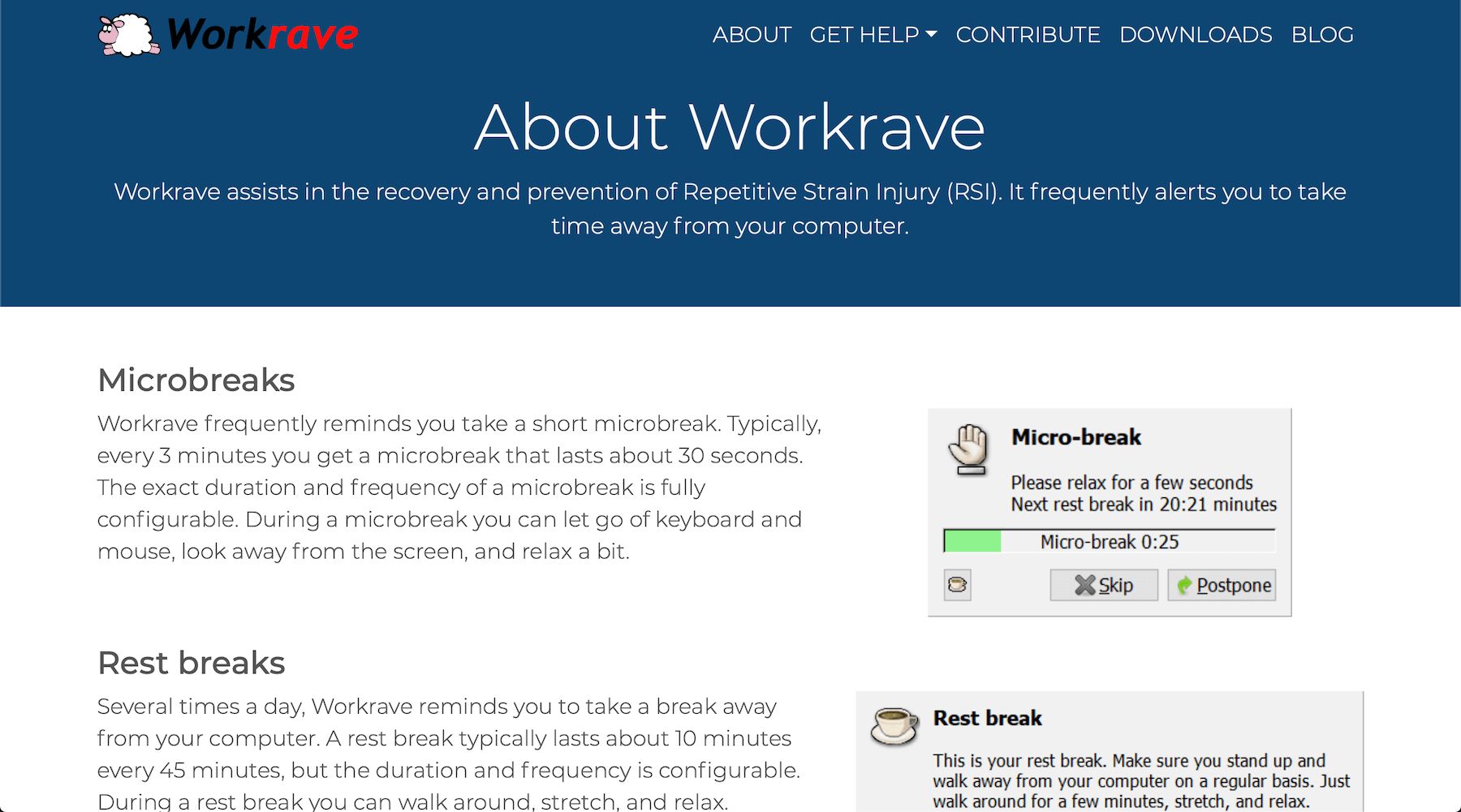
Your keyboard is disabled and the only way to skip this window is to restart the system. The Strict mode is disabled by default, because well it’s really Strict. WARNING!: There is no way to skip Strict mode.
#COMPUTER BREAK REMINDER PRO#
Pro tip: You can also use the shortcut Ctrl+Alt+Enter Strict mode Save the new settings with Save and close and test the new settings with Have a rest now. You can change work and rest time duration from the Simple view. The standart Iris setup or the Normal mode is an overlay window looking like this: How exactly Iris can help you? Normal mode Blink often to keep the eyes moist.įinally we get to the point. Look away from the screen every 20 minutes or so and either gaze out the window or scan the room for about 20 seconds to rest your eyes. The 20-20-20 rule suggest that after every 20 minutes, you (the computer user) should take a break for at least 20 seconds and look at objects that are 20 feet away from you. There is a really popular rule among ophthalmologist and doctors called 20-20-20 rule. Repetitive stress injury (RSI) and eye strain are common ailments among computer users, and there’s no silver bullet for avoiding them beyond taking regular breaks to relax. If these symptoms are not treated, they can have a real effect on your work performance. If you have computer vision syndrome, you may experience some or all of these symptoms: However, regular computer use can be the source of significant eye strain and discomfort. There’s no evidence that computer vision syndrome causes any long-term damage to the eyes. What Symptoms Are Part of Computer Vision Syndrome? The ability to focus on near and far objects starts to diminish after about age 40 – a condition called presbyopia. That’s because the lens of your eye becomes less flexible. Working at a computer gets even more difficult as you get older. Working on a computer is more challenging to your eyes than reading a book or piece of paper, because a computer screen also adds the elements of screen contrast, flicker, and glare.Ĭomputer eye problems are more likely to occur if you already have an eye problem(such as nearsightedness or astigmatism) or if you need glasses but don’t wear them or wear the wrong prescription for computer use. You may have to look down at papers and then back up to type, and the eyes have to accommodate to changing images on the screen in order to create a clear picture for the brain to interpret.Īll of these functions require a lot of effort from eye muscles. Working at a computer requires that the eyes continuously focus, move back and forth, and align with what you are seeing. Just like those other repetitive stress injuries, computer vision syndrome can get worse the longer you continue the activity.


It occurs when you’re carrying out the same motion over and over again. How Can the Computer Screen Affect Vision?Ĭomputer vision syndrome is similar to carpal tunnel syndrome and other repetitive stress injuries at work.
#COMPUTER BREAK REMINDER PORTABLE#
Kids who stare at portable video games or tablets or who use computers throughout the day at school also can experience eye problems related to computer use, especially if the lighting and computer position are less than ideal. In addition, working adults aren’t the only ones vulnerable to computer vision syndrome. Somewhere between 50% and 90% of people who work at a computer screen have at least some symptoms of eye trouble. Research shows computer eye problems are common. Instead, the term encompasses a whole range of eye strain and pain experienced by computer users. The name for eye problems caused by computer use is Computer vision syndrome (CVS). And inevitably, all of that staring can put a real strain on your eyes. Staring at a computer monitor for hours on end has become a part of the modern workday.


 0 kommentar(er)
0 kommentar(er)
